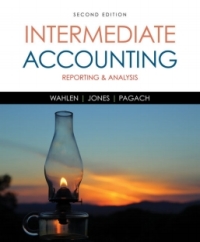Question
1) In 2021, John had the following insured personal casualty losses (arising from one casualty in a Federally-declared disaster area). John also had $45,000 AGI
1)
-
In 2021, John had the following insured personal casualty losses (arising from one casualty in a Federally-declared disaster area). John also had $45,000 AGI for the year before considering the casualty.
Fair Market Value
Asset
Adjusted Basis
Before
After
Insurance Recovery
A
$9,200
$8,000
$1,000
$2,000
B
3,000
4,000
-0-
1,000
C
3,700
1,700
-0-
900
John's casualty loss deduction is:
a. $3,200
b. $1,500
c. $3,100
d. $7,800
2)
-
Andy, a calendar year taxpayer, owns a warehouse (adjusted basis of $190,000) which is destroyed by a tornado in November 2019. He receives insurance proceeds of $250,000 in January 2020. If before 2022, Andy replaces the warehouse with another warehouse costing at least $190,000, he can elect to postpone the recognition of any realized gain.
True
False
3)
Realizing that providing for a decent retirement is up to them, Hank and Sarah begin contributing regularly to their IRAs. This year, they each make a $5,000 contribution to a traditional IRA. The maximum credit percentage rate for taxpayers filing a joint return applies for AGI between 0 and $39,500. If Hank and Sarah's AGI is $37,000 on their joint return, what is the amount of their credit for certain retirement plan contributions?
| a. | $10,000 | |
| b. | $1,000 | |
| c. | $5,000 | |
| d. | $2,000 |
Step by Step Solution
There are 3 Steps involved in it
Step: 1

Get Instant Access to Expert-Tailored Solutions
See step-by-step solutions with expert insights and AI powered tools for academic success
Step: 2

Step: 3

Ace Your Homework with AI
Get the answers you need in no time with our AI-driven, step-by-step assistance
Get Started


